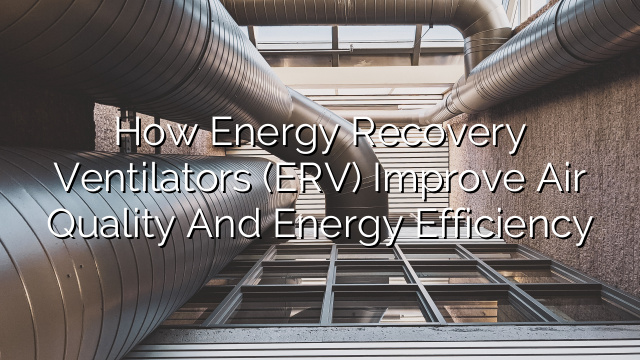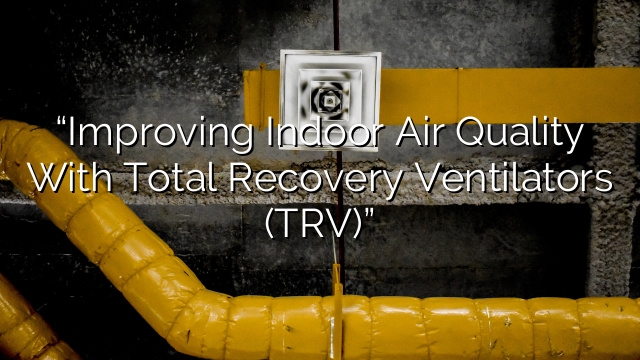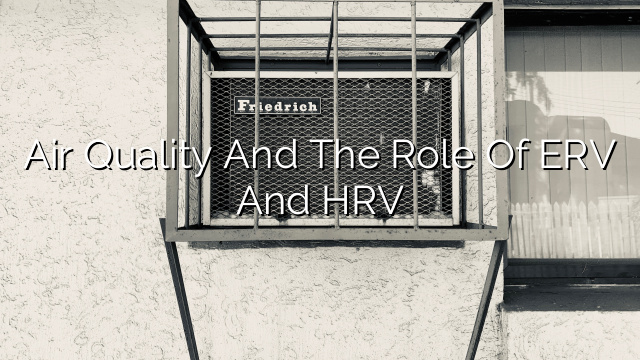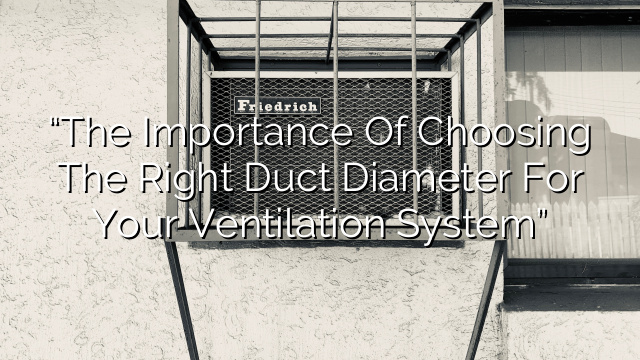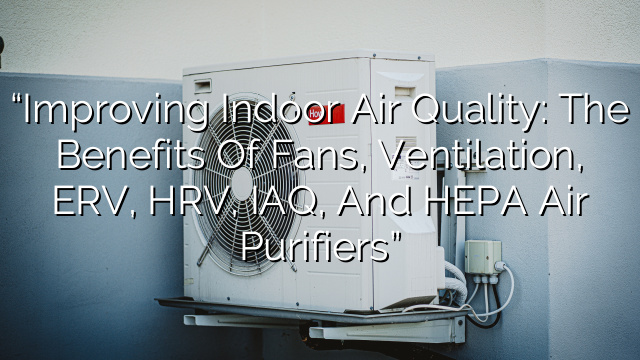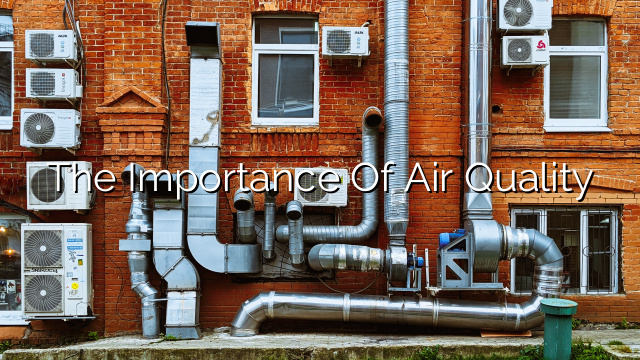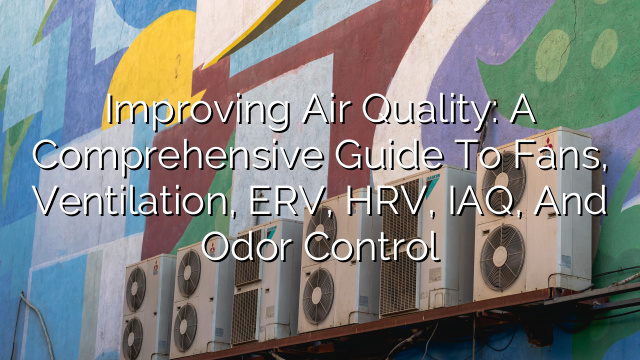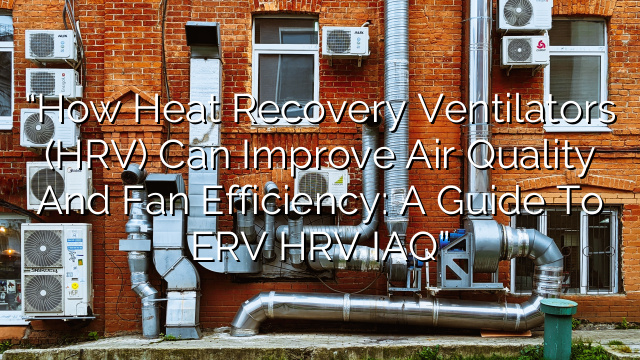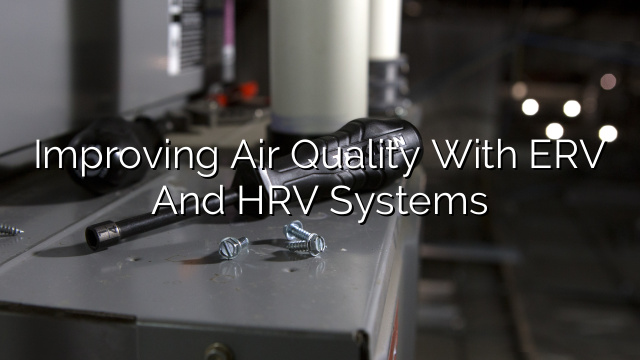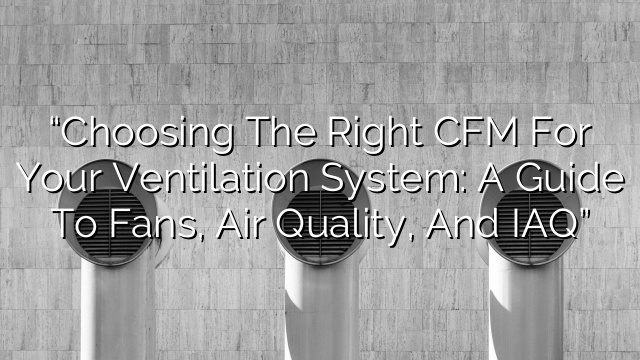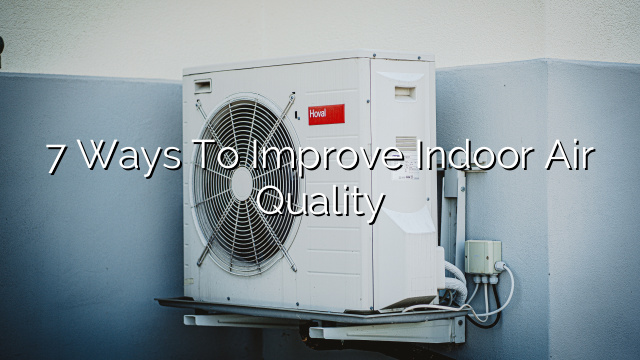Fans & Ventilation: How Energy Recovery Ventilators (ERV) improve Air Quality and Energy Efficiency
In today’s modern homes, good indoor air quality is essential for our health and well-being. However, as homes become more airtight to improve energy efficiency, fresh air exchange is often compromised. The solution to this problem lies in Energy Recovery Ventilators (ERVs) – highly efficient ventilation systems that improve air quality while reducing energy consumption.
What are Energy Recovery Ventilators (ERVs)?
Energy Recovery Ventilators (ERVs) are mechanical ventilation systems that bring in fresh outside air while simultaneously removing stale indoor air. What sets ERVs apart from other ventilation systems is their ability to recover both heat and moisture from the outgoing air and transfer it to the incoming air. This heat and moisture exchange process helps to maintain a comfortable indoor environment while preserving energy.
How do Energy Recovery Ventilators (ERVs) work?
Energy Recovery Ventilators (ERVs) work by utilizing a heat exchanger to transfer heat and moisture between the outgoing and incoming airstreams. The heat exchanger contains a series of plates or wheels that allow the two airstreams to pass by each other without mixing. As the warm and moist indoor air passes through the heat exchanger, the heat and moisture are captured and transferred to the incoming fresh air. This process ensures that the outgoing air helps to heat or cool the incoming air, depending on the season.
Benefits of Energy Recovery Ventilators (ERVs)
- Improved air quality: Energy Recovery Ventilators (ERVs) ensure a constant supply of fresh, filtered air while removing pollutants, allergens, and odors from the indoor environment. This helps to improve indoor air quality and promote better respiratory health.
- Energy efficiency: By recovering both heat and moisture from the outgoing air, Energy Recovery Ventilators (ERVs) reduce the load on heating and cooling systems. This translates into lower energy consumption and reduced utility bills.
- Humidity balance: Energy Recovery Ventilators (ERVs) help to maintain a balanced indoor humidity level by transferring moisture from the humid indoor air to the drier outside air during the summer months, and vice versa during the winter months. This helps to create a more comfortable indoor environment and prevents issues associated with excess humidity or dryness.
- Noise reduction: Energy Recovery Ventilators (ERVs) can help reduce noise pollution by providing a constant supply of fresh air without the need to open windows or rely solely on noisy mechanical fans.
- Environmental sustainability: By reducing energy consumption and improving indoor air quality, Energy Recovery Ventilators (ERVs) contribute to a more sustainable living environment.
Are Energy Recovery Ventilators (ERVs) suitable for all homes?
Energy Recovery Ventilators (ERVs) are suitable for most homes, especially those that are well-insulated and airtight. However, it’s essential to consider factors such as the size of the home, the number of occupants, and the local climate when determining the appropriate capacity of an ERV system. Consulting with a professional HVAC contractor can help determine the best option for a specific home.
Energy Recovery Ventilators (ERVs) vs. Heat Recovery Ventilators (HRVs)
While Energy Recovery Ventilators (ERVs) and Heat Recovery Ventilators (HRVs) serve similar purposes, there is one key difference between the two systems. ERVs not only transfer heat but also moisture between the incoming and outgoing airstreams, while HRVs only recover heat. The decision between an ERV or an HRV depends on the climate and specific needs of a home. In humid climates, an ERV may be more suitable for maintaining optimal humidity levels.
FAQs
- Can Energy Recovery Ventilators (ERVs) replace traditional HVAC systems?
No, Energy Recovery Ventilators (ERVs) are primarily designed to improve ventilation and indoor air quality. They work best when integrated with traditional HVAC systems to achieve optimal comfort and energy efficiency.
- Do Energy Recovery Ventilators (ERVs) require regular maintenance?
Yes, Energy Recovery Ventilators (ERVs) require regular maintenance to ensure optimal performance. This includes cleaning or replacing filters, checking and cleaning the heat exchanger, and inspecting the overall system for any issues. Consulting the manufacturer’s guidelines and scheduling routine professional maintenance is advisable.
- Are Energy Recovery Ventilators (ERVs) noisy?
No, Energy Recovery Ventilators (ERVs) are designed to operate quietly. However, it’s essential to choose a reputable brand and model and ensure proper installation to minimize any potential noise disturbance.
- Can Energy Recovery Ventilators (ERVs) reduce heating and cooling costs?
Yes, Energy Recovery Ventilators (ERVs) can help reduce heating and cooling costs by recovering heat from the outgoing air during the winter and pre-cooling or pre-heating the incoming air during the summer. This reduces the load on HVAC systems and consequently lowers energy consumption.
- Are Energy Recovery Ventilators (ERVs) expensive to install?
The cost of installing an Energy Recovery Ventilator (ERV) varies depending on factors such as the size of the system, the complexity of installation, and local labor and material costs. However, considering the long-term benefits and energy savings, installing an ERV is a worthwhile investment in terms of improved health and energy efficiency.

